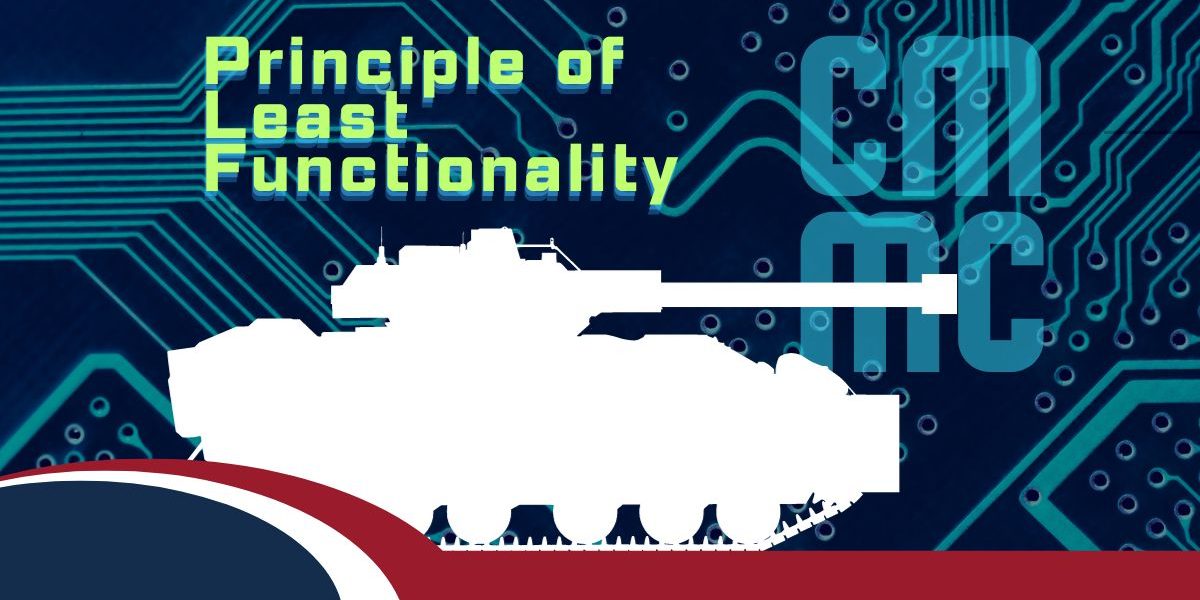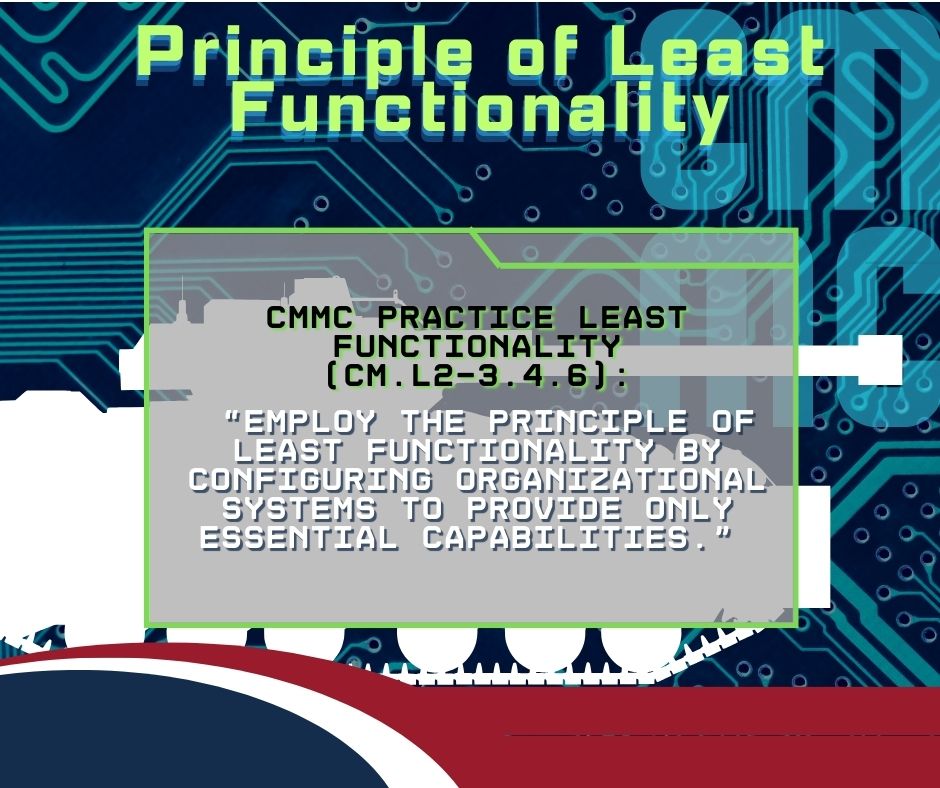As you navigate your way through the Cybersecurity Maturity Model Certification (CMMC) compliance, you will come across the term “principle of least functionality.” But what does it mean, exactly? In today’s blog post, we give you all the resources you need to understand this key concept.
About the Principle of Least Functionality
Least functionality is a cybersecurity principle that states that information systems must be configured to provide only essential capabilities.
Applying the principle of least functionality means prohibiting or restricting the use of all functions that are not strictly required for the operation of a system.
Some real-life examples of the principle of least functionality in action include:
- Limiting device functionality to a single function per device when possible (for example, database server, web server, etc.)
- Disabling any functions, ports, protocols, or services within that are unnecessary or non secure.
- Managing access to systems based on user role and/or business function.
The Principle of Least Functionality and CMMC
The principle of least functionality is already present in NIST SP 800-171, one of the origin documents for the Cybersecurity Maturity Model Certification.
CMMC devotes an entire practice within the Configuration Management (CM) domain to this principle: “Least Functionality” (CM.L2-3.4.6)
This is a CMMC Level 2 practice. In other words, you are subject to this requirement if you want to achieve CMMC Level 2 certification or higher.
The Least Functionality practice requires defense contractors and subcontractors to “Employ the principle of least functionality by configuring organizational systems to provide only essential capabilities.”
Contact our CMMC Registered Practitioners Today
The principle of least functionality impacts other CMMC practices such as System Baselining (CM.L2-3.4.1) and is closely interrelated with the practice Nonessential Functionality (CM.L2-3.4.6), according to which defense contractors and subcontractors must “Restrict, disable, or prevent the use of nonessential programs, functions, ports, protocols, and services.”
Implementing this principle can be a challenging task because today’s electronic devices come with a variety of functions and applications in addition to those that are strictly required.
In the next section, we will see a concrete example of least functionality and offer some tips on how to comply with this CMMC practice.
How To Comply With the Least Functionality Requirement?
As you might imagine, implementing the least functionality principle throughout a system is usually easier said than done.
Take, for example, installing a new server. This is a relatively common task that many small and midsize businesses (SMBs) within the Defense Industrial Base need to tackle at some point.
Deploying a new server while being mindful of the least functionality principle would entail:
- Researching the software that comes with the server and determining which utilities are essential
- Removing the unneeded software
- Disabling ports, protocols and services, according to CM.L2-3.4.6
Although these are only three steps, they require an intermediate to advanced level of technical knowledge. Now, keep in mind that you need to apply the same general principle to all the devices within your CMMC scope. The task is beyond the capabilities of most SMBs.
The good news is that if you need help preparing for your CMMC assessment and ensure that your organization observes the principle of least functionality, all you have to do is to contact Brea Networks / CMMCCompliance.us today.
Our CMMC registered practitioners have the technical know-how and the drive to ensure that your systems are compliant — even when that means leveraging our resources to create customized solutions designed with your organization’s unique needs in mind.
For more information on how SMBs can get (and stay) compliant, read our previous blog post, “CMMC for Small Businesses: a Starter Kit.”
Need To Achieve CMMC Compliance? We Are Here To Help
Whether it’s CMMC, NIST SP 800-171, DFARS, or ITAR, we help organizations achieve compliance with all applicable cybersecurity regulations at any level so that they can win and maintain Department of Defense (DoD) contracts.
Brea Networks, LLC is a fully Registered Provider Organization (RPO) and is a Microsoft partner with full Microsoft GCC High licensing and migration solutions.
Contact our CMMC Registered Practitioners today by clicking here.
Brea Networks, LLC / CMMCCompliance.us
451 W. Lambert Rd Suite 214
Brea, CA 92821
Tel: (714) 592-0063





